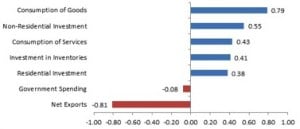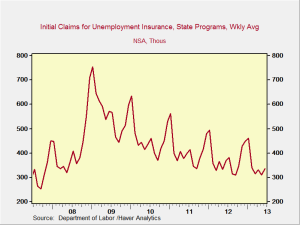Over the past couple of years, I’ve made a concerted effort to be healthier, exercise more, and weigh less. This was prompted by a lot of huffing and puffing from carrying Jackson around, as well as the realization that, the way I was, I would be the “fat dad,” which I was very unwilling to accept.
I had a lot of success, losing about 50 pounds peak to trough. Unfortunately, I then put about 25 of it back on and am now working on getting rid of that again. Being a research geek, I found myself looking at a great number of websites and books, which, in many cases, prescribed opposite courses of action. The diet industry has literally tens of thousands of books and, it seems, even more websites. Many of the diets, if you look into them, are actually repackaged and sold under new names every decade or two.
What seems conspicuously absent in many of these plans, though, is clinical data on what works. What’s almost entirely absent is an analysis of which plans work for different types of people. Even for plans with supporting clinical data, there is a presumption that one size fits all. I doubt that’s the case, since it never has been in any other situation. I suspect that many or all of these plans work for some people, if they stick to it, but not for others.
The other real problem in evaluating the success of any weight loss plan is the selection bias in most of the available data. People who fail on a diet rarely write about it and are certainly never included in the advertising.
For anyone who cares, I seem to have found a mix that works for me, which consists of the following:
- An iPhone app, Lose It!, that allows me to track what I eat. It’s amazing just how difficult it is to pick up that doughnut when you have to record it in your phone, and when you know exactly how much damage it’s doing to your goals.
- Walking while I read. Quite a bit of my job is reading, and now I head to the company gym downstairs—thanks Commonwealth!—to walk while I read. This is worth hundreds of calories a day. An interesting thing about exercise, it seems, is that low-heart-rate activity like walking burns calories without stoking the appetite. Another benefit is that, apparently, if you sit you die, so I’m trying to minimize my sitting.
- Not eating carbs in the morning. Instead, I have an omelette with a meat and vegetable—no bread—which extends the fat burning that started overnight.
I don’t suggest this will work for anyone else, but for me the results are substantial—and, more important, sustainable. This is what killed me before when I put a lot of the weight back on: what I was doing then wasn’t sustainable.
For many people, investing falls under the same category—should do, don’t want to do—as weight loss. It’s something that will pay future benefits but cause present pain. For those people, I think weight loss lessons have some value.
First, set up a regular habit that’s easy to keep. I like omelettes, for example, and the cafeteria in the building next door does a great one—very easy. For my retirement investing, I set a deferral percentage that comes directly out of my pay. If I can save more, I set up a similar direct deposit to an investment account. Another example might be a credit card that automatically deposits some percentage of purchases to an investment account.
Second, use a preset method to determine allocations and rebalance. For many people, a financial advisor is an ideal solution, but other web-based programs are also becoming available. I regularly review and rebalance my portfolios using a predetermined decision rule, so I don’t have to think about it, just execute. This makes it much easier to actually do. Walking while reading is a good example of this—I just grab my reading material and head to the treadmill. No thinking, just do it.
Third, review the analysis behind your decision rules on a regular basis. As with dieting, there are tons of investing options, many of which really work—but you have to be able to stick to them. If your process isn’t working for you, you need to recognize and change that. I have reviewed much of the research and concluded that what I’m doing will work for me, and I’m monitoring the results to make sure it is.
So far, so good.







